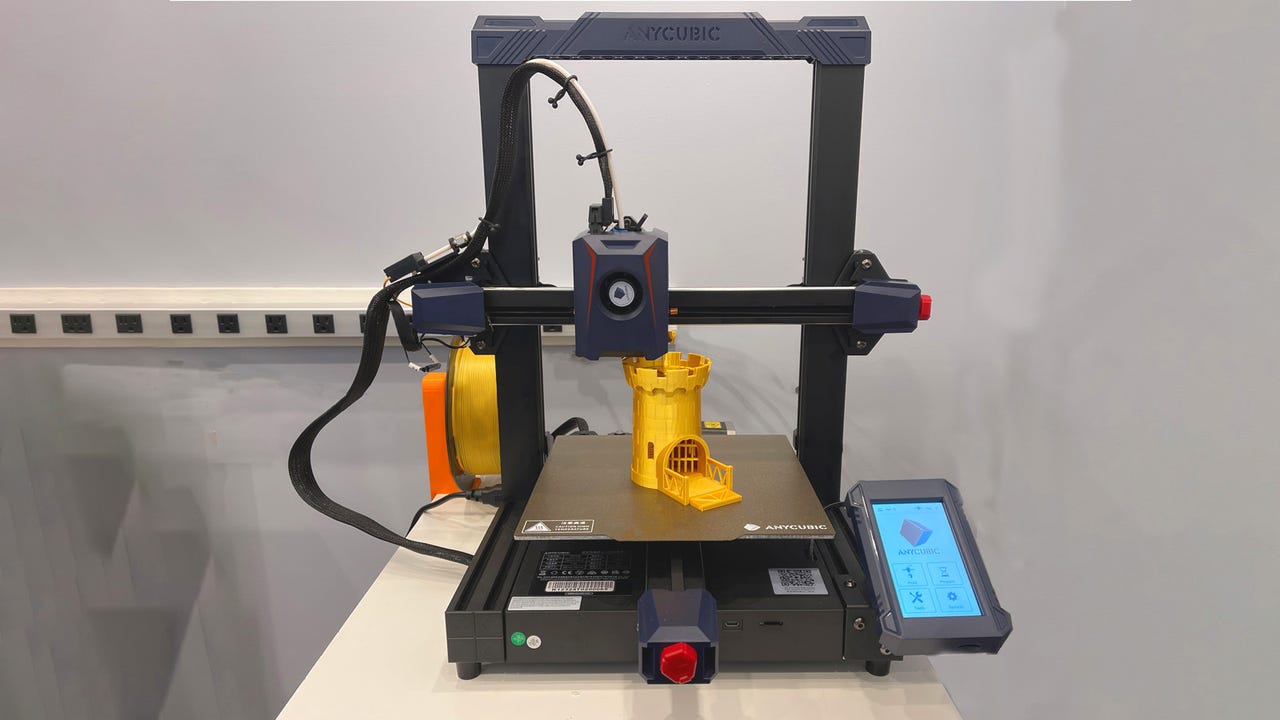'ZDNET Recommends': What exactly does it mean?
ZDNET's recommendations are based on many hours of testing, research, and comparison shopping. We gather data from the best available sources, including vendor and retailer listings as well as other relevant and independent reviews sites. And we pore over customer reviews to find out what matters to real people who already own and use the products and services we’re assessing.
When you click through from our site to a retailer and buy a product or service, we may earn affiliate commissions. This helps support our work, but does not affect what we cover or how, and it does not affect the price you pay. Neither ZDNET nor the author are compensated for these independent reviews. Indeed, we follow strict guidelines that ensure our editorial content is never influenced by advertisers.
ZDNET's editorial team writes on behalf of you, our reader. Our goal is to deliver the most accurate information and the most knowledgeable advice possible in order to help you make smarter buying decisions on tech gear and a wide array of products and services. Our editors thoroughly review and fact-check every article to ensure that our content meets the highest standards. If we have made an error or published misleading information, we will correct or clarify the article. If you see inaccuracies in our content, please report the mistake via this form.
This is the best and fastest sub-$300 3D printer I've tested yet

A commonly-accepted product marketing aphorism is "Fast, cheap, or good: pick two." With the Anycubic Kobra 2, however, you get all three. The printer is astonishingly fast, fairly inexpensive (certainly compared to others in its speed class), and produces surprisingly clean prints.
Also: This Anker 3D printer blew me away with how fast and easy it is to use
The Kobra 2 is an FDM (fused deposition modeling) 3D printer, which means it uses melted extruded filament to build objects layer by layer. The other common type of 3D printer is a resin (or SLA) printer, named after stereolithography. Resin printers use a liquid resin that is hardened by light exposure, also layer by layer.
Generally (and this is a pretty broad generalization), you can build bigger, more robust parts with a filament printer, and smaller, more highly detailed parts with a resin printer. If you're building a shelf bracket, you'd want to use a filament printer. If you want to build a tiny person for a diorama, you'd use a resin printer.
View at AmazonThe Kobra 2 printer uses a heated extruder to melt the filament and deposit layers on a build plate. It's at the extruder that we start to see some features that help the Kobra 2 print so quickly.
Also: 5 very useful tools and gadgets for better 3D printing
The extruder is direct-drive, which means it pulls the filament directly into the hot end. This provides the printer more control over filament movement compared to printers that have the gearing mechanism some distance away from the extruder.
Faster printers tend to use this remote push mechanism because it makes the gantry lighter, and therefore less subject to forces of inertia. But the Kobra 2 uses robust metal wheels to support the entire extruder mechanism, so they don't wear down after heavy use.
It also uses dual lead screws, which move the gantry up and down evenly, although it is interesting that the two lead screws are coordinated by a rubber belt, rather than another metal part. Even so, it works.
Also: Best cheap 3D printers for under $300
The bottom line, though, is whether the printer prints faster and maintains print quality. And it does. Just check out how pretty this dice castle came out.
Here's where the speed is apparent. I printed the castle on the Anycubic Kobra 2 in 4 hours and 30 minutes. On Anycubic's Vyper printer, it took 7 hours and 26 minutes, on the Creality Sermoon D1, it took 6 hours and 52 minutes, and on the $6,000 Ultimaker S5, it took 7 hours and 43 minutes. All four used print settings of 10% infill and an 0.2mm layer height, and were done using a 0.4mm nozzle.
Here's the final product from the Anycubic Kobra 2.
Without any special tuning, the Kobra 2 was roughly 30-45% faster than the other printers. Anycubic claims a 5X speed improvement, and that may be possible (a) with a lot of tuning, and (b) compared to a poorly configured comparison printer.
The line across the wing is the only defect I found in any of the prints I've done on this printer. And this dragon is a particularly difficult print for an FDM printer to do.
Even so, speed increases of 30-45% right out of the box running the default configuration is impressive and can lead to some considerable time savings.
At 250 x 220 x 220mm, the build area is slightly smaller than the Anycubic Vyper I reviewed last year. At $269 via Anycubic's site or $279 on Amazon (make sure you apply the coupon, if available), it's also less expensive. In fact, the capabilities list (beyond the extra fast printing) for this under-$300 printer is impressive: automatic bed leveling, a removable print surface, filament runout sensors, power-fail resume, and a LCD touch panel to control it all.
I bottom-lined this printer to you in the first sentence. It is an excellent printer, especially given its price and speed. Unless I discover something in ongoing use, the Anycubic Kobra 2 is going to be my standard recommendation for an entry-level, yet powerful printer. For under $300, I have yet to see anything that comes close.
Featured reviews
You can follow my day-to-day project updates on social media. Be sure to follow me on Twitter at @DavidGewirtz, on Facebook at Facebook.com/DavidGewirtz, on Instagram at Instagram.com/DavidGewirtz, and on YouTube at YouTube.com/DavidGewirtzTV.
